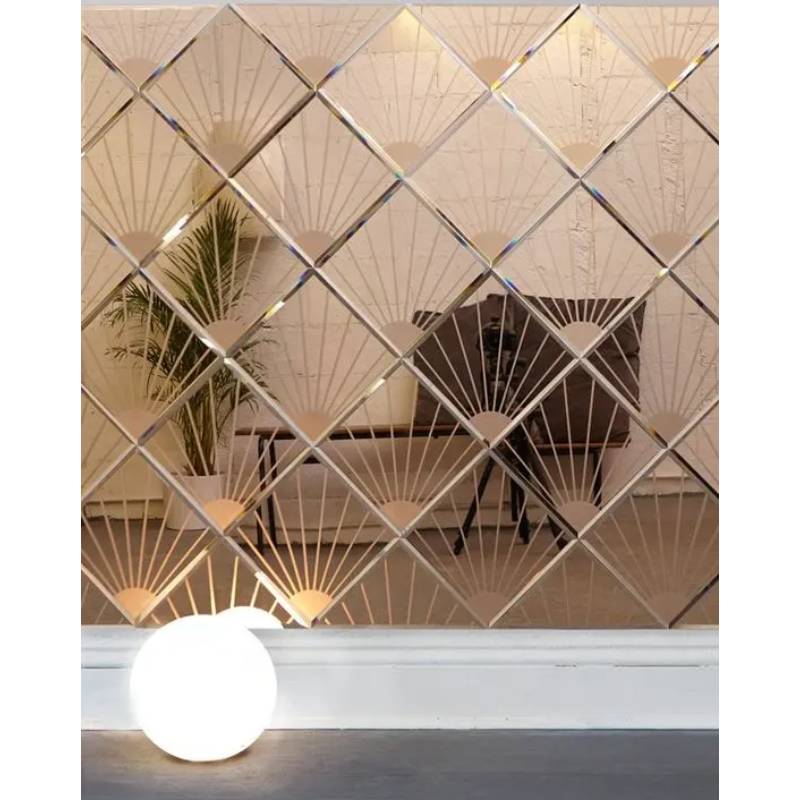The Unique Features of Tempered Glass A Comprehensive Overview
Tempered glass, also known as toughened glass, is a type of safety glass that has been treated through controlled thermal or chemical processes to increase its strength compared to standard glass. This specialized form of glass exhibits a variety of features that make it ideal for a wide range of applications, including architecture, automotive design, and furniture manufacturing. In this article, we will explore the distinctive characteristics of tempered glass and the benefits they offer.
1. Enhanced Strength and Durability
One of the primary features of tempered glass is its enhanced strength. The tempering process involves heating the glass to temperatures of over 600 degrees Celsius and then rapidly cooling it. This process alters the internal structure of the glass, resulting in a material that is several times stronger than its untreated counterpart. This increased strength not only makes tempered glass more resistant to physical impact but also helps it withstand thermal stresses, making it an ideal choice for environments experiencing temperature fluctuations.
2. Safety Features and Reduced Injury Risk
In the event of breakage, tempered glass shatters into small, blunt pieces rather than sharp shards. This characteristic significantly reduces the risk of injury in case of accidents, making it a preferred option for areas where safety is a concern, such as glass doors, shower enclosures, and facades. The safety properties of tempered glass comply with various regulatory standards, further ensuring that it is a reliable material for both commercial and residential applications.
3. Heat Resistance and Thermal Stability
Tempered glass is designed to tolerate high temperatures and sudden changes in temperature without breaking. This makes it suitable for use in environments where heat is a factor, such as in ovens, fireplaces, and saunas. The glass can typically handle thermal stress of up to 250 degrees Celsius, making it a practical choice for industrial applications and consumer goods alike. Its ability to remain stable under heat eliminates concerns about glass breakage due to thermal shock.
tempered glass features
4. Aesthetic Appeal
Beyond its functional advantages, tempered glass also offers aesthetic benefits. The clarity and transparency of tempered glass allow for seamless design integration, enhancing the visual appeal of various structures. Whether used in contemporary buildings, stylish furniture, or luxury vehicles, tempered glass contributes to a sleek and modern look. Additionally, it can be treated with coatings that improve its aesthetic qualities, such as tinted finishes or patterns, further expanding its design possibilities.
5. Easy Maintenance
Tempered glass is relatively easy to clean and maintain, making it a practical choice for many applications. Its smooth, non-porous surface helps resist dirt, dust, and stains, which can be easily wiped away with standard household cleaning agents. As a result, tempered glass keeps looking good and maintains its clarity over time, whether used in windows, doors, or tabletop surfaces.
6. Energy Efficiency
In recent years, advancements in manufacturing technologies have enabled tempered glass to be treated to improve its energy efficiency. Low-emissivity (Low-E) coatings can be applied to tempered glass, reflecting heat back into a room during the winter and keeping it out during summer. These features contribute to lower energy costs for heating and cooling, making tempered glass an environmentally friendly choice for building designs that prioritize sustainability.
Conclusion
The unique features of tempered glass—its strength, safety, heat resistance, aesthetic appeal, easy maintenance, and energy efficiency—make it an essential material in modern construction and design. As our technological capabilities continue to advance, the applications and benefits of tempered glass are expected to expand, positioning it as a key player in the ongoing pursuit of innovative and sustainable materials. Whether as a design element or a structural component, tempered glass will undoubtedly remain a prominent choice for architects, designers, and consumers seeking quality and elegance in their environments.
 Afrikaans
Afrikaans  Albanian
Albanian  Amharic
Amharic  Arabic
Arabic  Armenian
Armenian  Azerbaijani
Azerbaijani  Basque
Basque  Belarusian
Belarusian  Bengali
Bengali  Bosnian
Bosnian  Bulgarian
Bulgarian  Catalan
Catalan  Cebuano
Cebuano  Corsican
Corsican  Croatian
Croatian  Czech
Czech  Danish
Danish  Dutch
Dutch  English
English  Esperanto
Esperanto  Estonian
Estonian  Finnish
Finnish  French
French  Frisian
Frisian  Galician
Galician  Georgian
Georgian  German
German  Greek
Greek  Gujarati
Gujarati  Haitian Creole
Haitian Creole  hausa
hausa  hawaiian
hawaiian  Hebrew
Hebrew  Hindi
Hindi  Miao
Miao  Hungarian
Hungarian  Icelandic
Icelandic  igbo
igbo  Indonesian
Indonesian  irish
irish  Italian
Italian  Japanese
Japanese  Javanese
Javanese  Kannada
Kannada  kazakh
kazakh  Khmer
Khmer  Rwandese
Rwandese  Korean
Korean  Kurdish
Kurdish  Kyrgyz
Kyrgyz  Lao
Lao  Latin
Latin  Latvian
Latvian  Lithuanian
Lithuanian  Luxembourgish
Luxembourgish  Macedonian
Macedonian  Malgashi
Malgashi  Malay
Malay  Malayalam
Malayalam  Maltese
Maltese  Maori
Maori  Marathi
Marathi  Mongolian
Mongolian  Myanmar
Myanmar  Nepali
Nepali  Norwegian
Norwegian  Norwegian
Norwegian  Occitan
Occitan  Pashto
Pashto  Persian
Persian  Polish
Polish  Portuguese
Portuguese  Punjabi
Punjabi  Romanian
Romanian  Russian
Russian  Samoan
Samoan  Scottish Gaelic
Scottish Gaelic  Serbian
Serbian  Sesotho
Sesotho  Shona
Shona  Sindhi
Sindhi  Sinhala
Sinhala  Slovak
Slovak  Slovenian
Slovenian  Somali
Somali  Spanish
Spanish  Sundanese
Sundanese  Swahili
Swahili  Swedish
Swedish  Tagalog
Tagalog  Tajik
Tajik  Tamil
Tamil  Tatar
Tatar  Telugu
Telugu  Thai
Thai  Turkish
Turkish  Turkmen
Turkmen  Ukrainian
Ukrainian  Urdu
Urdu  Uighur
Uighur  Uzbek
Uzbek  Vietnamese
Vietnamese  Welsh
Welsh  Bantu
Bantu  Yiddish
Yiddish  Yoruba
Yoruba  Zulu
Zulu 

